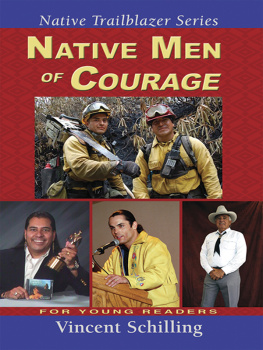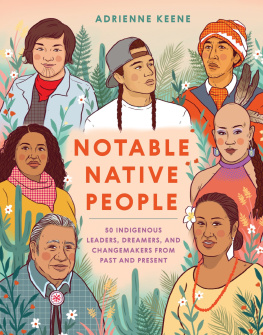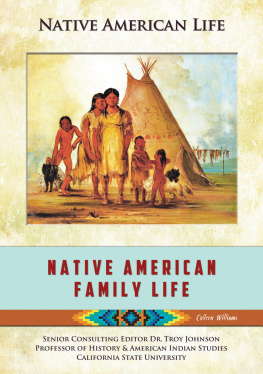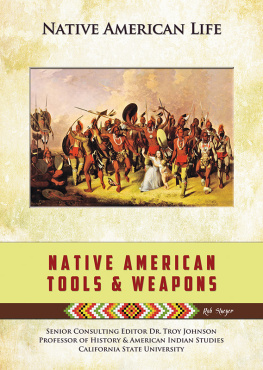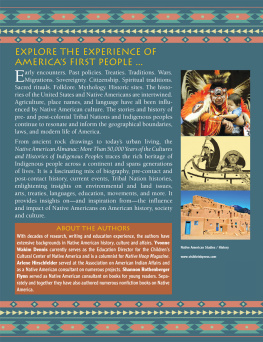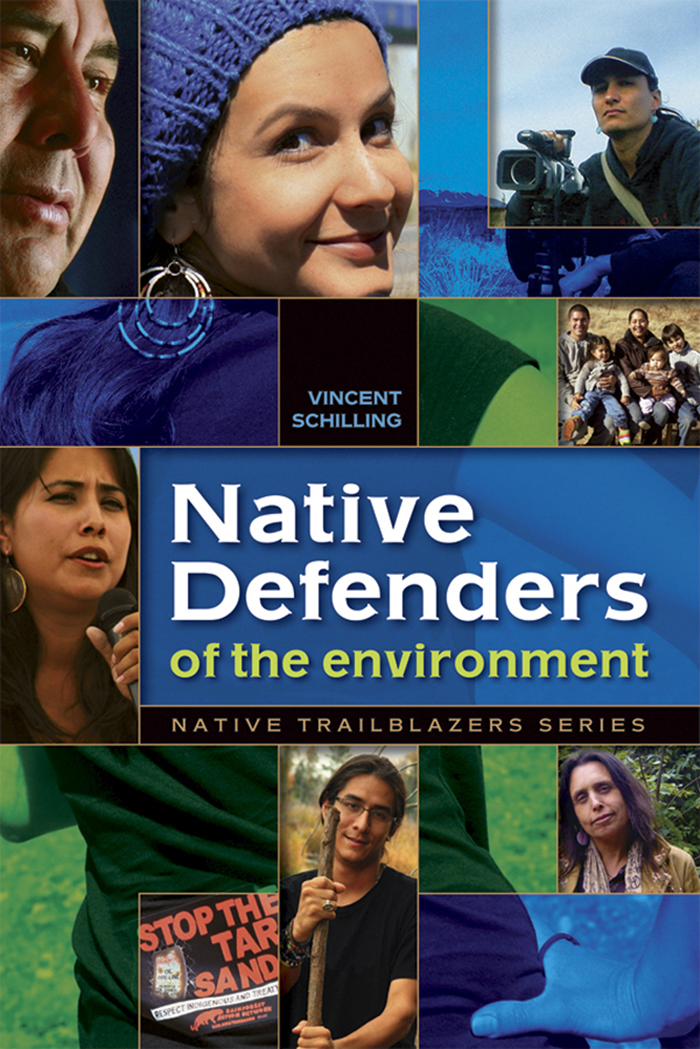
Library of Congress Cataloging-in-Publication Data
Schilling, Vincent.
Native defenders of the environment / Vincent Schilling.
p. cm.
ISBN 978-0-9779183-7-9 (pbk.) -- ISBN 978-1-57067-995-7 (e-book)
1. Indigenous peoplesEcology. 2. Indian activists. 3. Environmentalism.
4. Environmental justice. I. Title.
GF50.S34 2011
333.720922dc23
2011023830
Vincent Schilling Cover and interior design: John Wincek
All rights reserved. No portion of this book may be reproduced by any means whatsoever, except for brief quotations in reviews, without written permission from the publisher.
7th Generation,
a division of Book Publishing Company
PO Box 99
Summertown, TN 38483 888-260-8458
bookpubco.com
Printed in Canada.
ISBN: 978-0-97791-83-7-9
Photo credits found on page viii.
Book Publishing Co. is a member of Green Press Initiative. We chose to print this title on paper with postconsumer recycled content, processed without chlorine, which saved the following natural resources:
36 trees
1,518 pounds of solid waste
13,018 gallons of water
2,878 pounds of greenhouse gases
25 million BTU of total energy
For more information, visit www.greenpress initiative.org.
Savings calculations thanks to the Environmental Defense Paper Calculator, www.edf.org/papercalculator.

CONTENTS
DEDICATION
To kathie hanson, bob holzapfel, Anna Pope, Barb Bloomfield, Jerry Hutchens, and all the other amazing folks at Book Publishing Company who have worked to make the Native Trailblazers book series a reality.
To my friend Dann Boyko, a true man of heart, who has shown me great kindness that I will always appreciate.
And to a young man who left us behind much too soon. I realize your work here was complete. Still, our hearts are with you, my Native brother and friend Summer Sky Narcomey.
ACKNOWLEDGMENTS
Admittedly, writing the acknowledgment section is nerve-racking to say the least, because I am always concerned I am going to forget someone. In the process of creating a book, there are literally hundreds of people who help to make it happen. So if in my haste I may forget to mention someone, please let me say I am sorry and in no way was my error intentional. My appreciation is heartfelt, even if these words may not reflect it now.
A big thank you to Ben Powless for many of his photos that grace this book. Beautiful stuff!
I want to thank Delores, my wife, for her constant support of a husband who cannot ever, ever repay her for how much better my life has become since she joined me on my lifes path.
I also want to thank my parents, Ray and Mary Schilling; Sharon, Mary, and Parker; Dann Boyko; Michael and Deb; Henry, Greg, Kathy, Bill, and Doris; Michael and Sylvia; and Felipe.
If there is anyone I did not mentionthanks to you, my dear friend, for all you have done to support me.
PHOTO CREDITS
: Courtesy of Delores Schilling
: Courtesy of Debra Bucher
: Courtesy of Michael Bucher
: Courtesy of Vincent Schilling
: Courtesy of Catherine Daly
: Courtesy of Russ Harrington
: Courtesy of Blackfire
: Courtesy of Nadya Kwandibens
: Courtesy of Leela Gilday
: Courtesy of Tammy Luker
: Courtesy of Pat Evans
: Courtesy of Melissa Walkup Kennison
: Courtesy of OReilly International
: Courtesy of Georgina Anderson
: Courtesy of Ayala family
PREFACE
This book was certainly a process of discovery. The Native environmentalists in this book do so much to help Mother Earth, it is overwhelming. Each chapter is an attempt to show a snapshot of each of their lives; however, these stories cannot even begin to cover the magnitude of what these activists face every day while fighting for social justice, environmental reform, and a return to the ways of their ancestors.
These environmental heroes sometimes literally put themselves in harms way to help those who cannot help themselves. Melina Laboucan-Massimo, Ben Powless, Tom Goldtooth, and others have visited parts of the world that have been torn apart by war and devastated by environmental destruction. In her fight against nuclear waste dumps, the late Grace Thorpe found herself lifted up and carried away by a group of guards during a demonstration.
Native trailblazers like Enei Begaye and Klee Benally are geniuses at organizing the masses to work for the good of Mother Earth. Their programs motivate our Native youth to take a stand and fight for what is right. It is not uncommon for the amazing individuals in this book, such as Winona LaDuke, Clayton Thomas-Muller, Sarah James, Evon Peter, and others, to be laughed at, insulted, ridiculed, and even assaulted while working for the greater good of our planet.
They have chosen a path that is not easy. They often face hardship and opposition and attacks against their characters. Yet still they press forwardbut why? As many of them said to me in some form or another, they wouldnt be able to look at themselves in the mirror or be able to sleep at night if they werent working to make a difference in this world.
I have to admit I dont envy their excruciatingly difficult road, but I am extremely impressed. These Native environmentalists are heroes who deserve to be honored in this book. I am profoundly grateful to have talked and shared some time with each one of them. I hope this book honors them in the same way that they honor our Mother Earth each and every day.
May the ancestors bless you. Aho!
GLOSSARY
Aboriginal. Aboriginal or First Nations are the terms used in Canada and throughout much of the world to refer to the Native (or original) inhabitants of the land. Aboriginal police in Canada are responsible for public order on First Nations reserves.
American Indian Movement (AIM). The American Indian Movement was founded in 1968 to bring attention to various concerns, including housing, police harassment, poverty, and treaty issues, that affect the Native communities. The organization attracts members from across the United States and Canada.
Aquifer. An aquifer is an underground layer of water-bearing gravel, rock, or sand. Water can be extracted from an aquifer using wells. Aquifers may occur at various depths; the closer they are to the surface, the more likely they are to be used for water supply and irrigation.
Atomic bomb. In 1945, during World War II, the United States dropped two atomic bombs on Japan. The first was dropped August 6 on the city of Hiroshima, killing 166,000 civilians. The second was dropped August 9 on the city of Nagasaki, killing 80,000 civilians. These two events mark the only use of atomic bombs in war.
Baby boomer. A baby boomer is someone who was born between 1946 and 1964. Baby boomers tend to think of themselves as a special generation, very different from those that came before. Their generation is among the first to grow up expecting the world to improve with time.


